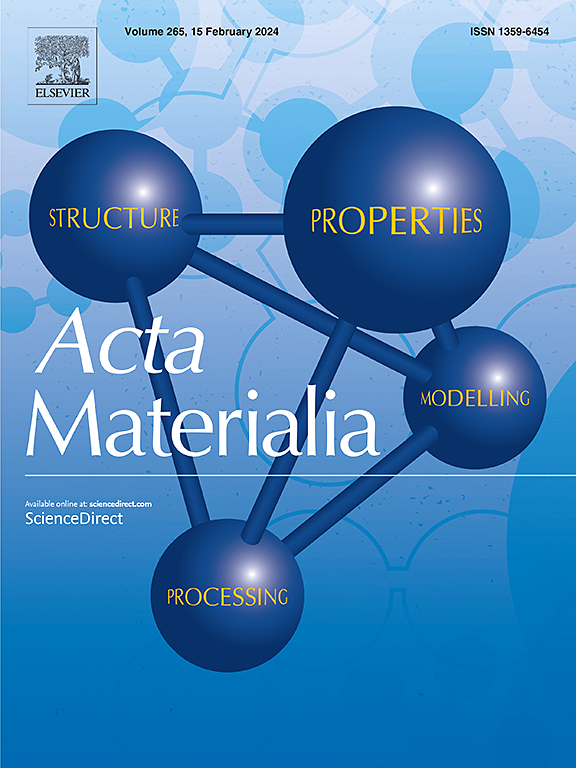A stabilized martensitic nucleation mechanism in TRIP-reinforced metallic glass composites with fractal structures
IF 9.3
1区 材料科学
Q1 MATERIALS SCIENCE, MULTIDISCIPLINARY
引用次数: 0
Abstract
Fractal structures, inherent morphological characteristics of dendrites, play a crucial role in determining the mechanical properties of materials. In this work, a stable martensitic nucleation mechanism was revealed within TRIP (transformation-induced plasticity) reinforced bulk metallic glass composites with fractal structures. This finding emerged from a comprehensive synthesis of numerical simulations and experimental investigations. The identified stable martensitic nucleation mechanism initiates a stagewise interaction between martensitic transformation and shear band propagation, denoted as “martensite-induced shear bands” and “shear band-induced martensite”. These deformation mechanisms, driven by fractal structural dendrites, are instrumental in achieving a desirable equilibrium between strength and ductility, which is advantageous over the traditional compromise of strength for enhanced plasticity. The profound understanding of stable martensitic nucleation and stagewise deformation mechanisms provides significant insights into the mechanical behavior of these materials, thereby facilitating the modulation of mechanical properties, such as through preloading treatments. Our findings advance the fundamental comprehension of fractal structure in TRIP-reinforced bulk metallic glass composites and provide a novel perspective for the design of high-performance materials.


分形结构trip增强金属玻璃复合材料的稳定马氏体形核机制
分形结构是枝晶固有的形态特征,对材料的力学性能起着至关重要的作用。本研究揭示了相变诱导塑性(TRIP)增强具有分形结构的大块金属玻璃复合材料具有稳定的马氏体成核机制。这一发现来自于数值模拟和实验研究的综合研究。确定的稳定马氏体形核机制启动了马氏体相变和剪切带扩展的阶段性相互作用,称为“马氏体诱导剪切带”和“剪切带诱导马氏体”。这些由分形结构枝晶驱动的变形机制有助于实现强度和延性之间的理想平衡,这优于传统的强度增强塑性妥协。对稳定马氏体形核和阶段变形机制的深刻理解为这些材料的力学行为提供了重要的见解,从而促进了机械性能的调节,例如通过预加载处理。我们的发现促进了对trip增强大块金属玻璃复合材料分形结构的基本理解,并为高性能材料的设计提供了新的视角。
本文章由计算机程序翻译,如有差异,请以英文原文为准。
求助全文
约1分钟内获得全文
求助全文
来源期刊

Acta Materialia
工程技术-材料科学:综合
CiteScore
16.10
自引率
8.50%
发文量
801
审稿时长
53 days
期刊介绍:
Acta Materialia serves as a platform for publishing full-length, original papers and commissioned overviews that contribute to a profound understanding of the correlation between the processing, structure, and properties of inorganic materials. The journal seeks papers with high impact potential or those that significantly propel the field forward. The scope includes the atomic and molecular arrangements, chemical and electronic structures, and microstructure of materials, focusing on their mechanical or functional behavior across all length scales, including nanostructures.
 求助内容:
求助内容: 应助结果提醒方式:
应助结果提醒方式:


